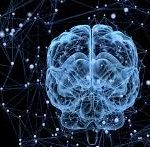My Thoughts on the Mozart Kv448 Effect in Research
The Mozart Kv448 effect originates from the claim by Rauscher et al. (1993) that listening ten minutes to the 1st movement of Mozart’s sonata for two pianos (Kv.448) improved college students’ spatial reasoning performance immediately.
I still find it difficult to believe that no other music was compared in Rauscher’s study, yet the birth of Mozart Kv448 effect on IQ was borne; the study included two other conditions: relaxing music (???) and silence.
Well, I happen to have played Mozart’ Kv448 at least about 30 times so far. Performing about 30 times includes approximately 100 hours of playing the same piece: my practice on one of the two-piano parts, numerous rehearsals, and performances (the whole sonata lasts about 25 minutes).
Surely all the pianists who performed this piece many times and I should have reached the 6th mentalisation by now 😂: think about the amount of work we put in at the speed of IQ improvement Rauscher claimed after 10 minutes listening. Regrettably, I only witnessed the boosted sale of the Labèque sister’s CD recording around the publication and the curious lack of improvement in my IQ despite hours of work.
I rest reassured by a meta-analysis by Pietschnig et al. (2010) in which Rauscher’s Mozart effect was miserably debunked: perhaps my brain isn’t too inferior to receive the benefit. But the myth is ever so delicious and seductive for many ambitious parents. There is no stopping to the Baby Mozart Phenomenon to this day.
I didn’t come across another form of Mozart Kv448 effect until this morning: an inspiring lecturer Dr Derek Tracy kindly sent me a copy of his writing in the British Journal of Psychiatry from January, in which a recent paper by Quon et al. (2021) was cited. Unlike the aforementioned Mozart KV448 effect, it is argued that the evidence for Mozart K448 effect in reducing interictal epileptic discharges (IEDs) is strong (Dastgheib et al., 2013).
Quon et al. (2021) compared different music unlike Rauscher et al. (1993): Mozart Kv448 as usual, Kv545 (a piano sonata in C major), Beethoven’s ‘für Elise’ (I am sure you know the piece), and a string version of Kv 448. Interestingly, neither für Elise nor a string version of Kv448 had therapeutic properties, confirming the Mozart Kv448 effect in treating refractory focal epilepsy.
My question is, ‘how can we confirm the Mozart Kv448 effect if a string version – after all, the same music arranged for string instruments – wasn’t therapeutic?’
And as shown in this study, another work, Mozart’s Kv545, had therapeutic potential too. So, please, researchers, remember that there are tons of other masterpieces that I am sure could also do the ‘magic’ such as significant IED reductions in 84% of subjects after 30 seconds of listening.
Warning though, some works regarded as ‘masterpieces’ could mess up otherwise a primarily healthy brain. I sometimes wonder whether I’d begin to believe that aliens are coming to get me if I listen to Stockhausen’s ‘Telemusik’ once more. #mozarteffect
Author: Mookie Menuhin
References :
Rauscher, F. H., Shaw, G. L., & Ky, C. N. (1993). Music and spatial task performance. Nature, 365(6447), 611-611.
Pietschnig, J., Voracek, M., & Formann, A. K. (2010). Mozart effect–Shmozart effect: A meta-analysis. Intelligence, 38(3), 314-323.
Tracy, D. K., Joyce, D. W., Albertson, D. N., & Shergill, S. S. (2021). Kaleidoscope. The British Journal of Psychiatry, 220(1), 47–48. https://doi.org/10.1192/bjp.2021.177
Quon, R. J., Casey, M. A., Camp, E. J., Meisenhelter, S., Steimel, S. A., Song, Y., Testorf, M. E., Leslie, G. A., Bujarski, K. A., Ettinger, A. B., & Jobst, B. C. (2021). Musical components are important for the Mozart K448 effect in epilepsy. Scientific Reports, 11(1). https://doi.org/10.1038/s41598-021-95922-7
Dastgheib, S. S., Layegh, P., Sadeghi, R., Foroughipur, M., Shoeibi, A., & Gorji, A. (2013). The Effects of Mozart’s Music on Interictal Activity in Epileptic Patients: Systematic Review and Meta-analysis of the Literature. Current Neurology and Neuroscience Reports, 14(1). https://doi.org/10.1007/s11910-013-0420-x

 Previous Post
Previous Post Next Post
Next Post